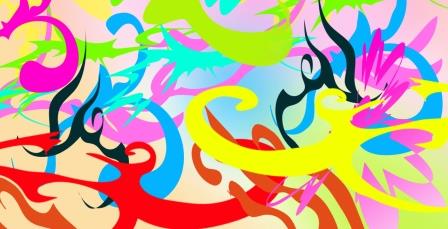How the 4 Elements of Design Impact Your Target Market

Before you talk to your web designer about how you want your website to look and feel, you will want to understand the characteristics that define your target market. Industry, gender, age, and cultural background are all elements that make up your audience. Understanding who they are and what they expect when they land on your web page is the key to creating a design that gets their attention and keeps them coming back for more.
Color
A collection of information from several studies about color preference by KISSmetrics reveals both men and women prefer blue over other colors, but before you saturate your website with multiple variations of navy, consider your industry. People are conditioned to associate certain colors with specific businesses and organizations. For example, a white background with red accents will likely trigger an image of the Red Cross and the medical field. This concept of color as it correlates with people’s expectations extends to color preferences between men and women as well as age groups. Shades or tints of purple are likely to draw the attention of women over men because more women list it among their favorite colors.
Layout
App-style icons and a minimalist design attract younger generations while traditional tabs and sliders appeal to older generations. This is largely due to the type of devices they use to search and shop online. Younger generations use mobile devices more than laptops and towers while older generations are accustomed to stationary systems and the layouts that accompany those screens. Some features like the placement of contact information are universal regardless of age or gender.
Font
Size matters when you’re talking about the font on your website. The purpose of any written content is to be read and understood. Like that hot model on the cover of a magazine, the font you choose should be easy on the eyes and grab your audience’s attention. Large, bold font helps break up the content on your pages making it easy to navigate. Font style will also help distinguish between different types of content on the same page. Using one font style in your sidebar and another for the body of content is perfectly acceptable and in many cases desirable if you’re deviating from the main subject on your page. Like color, fonts trigger reactions so choosing one that fits the expectations of your target market is crucial.
Content
The golden rule of web design is to remember that you are creating a website for your audience not for you. This means writing for the reader. Keep it simple and direct. The goal of the content on your page is to get your audience to take action. Whether it’s to read and share the information or buy your products and services, it needs to be crafted in a way that is valuable. Sometimes less is more. Across the board, internet users of all ages prefer content in blocks of 300 words. The faster you get to the point, the happier they are. Content isn’t relegated to the written word either. Images are typically the first element that catches people’s attention. If it’s too busy, it will turn them off and they won’t bother to read your cleverly worded copy that might have captivated their interest. Putting yourself in their shoes and being considerate of their time will yield the best results.
Categorized in: Miscellaneous
Published On: Oct 17, 2015
